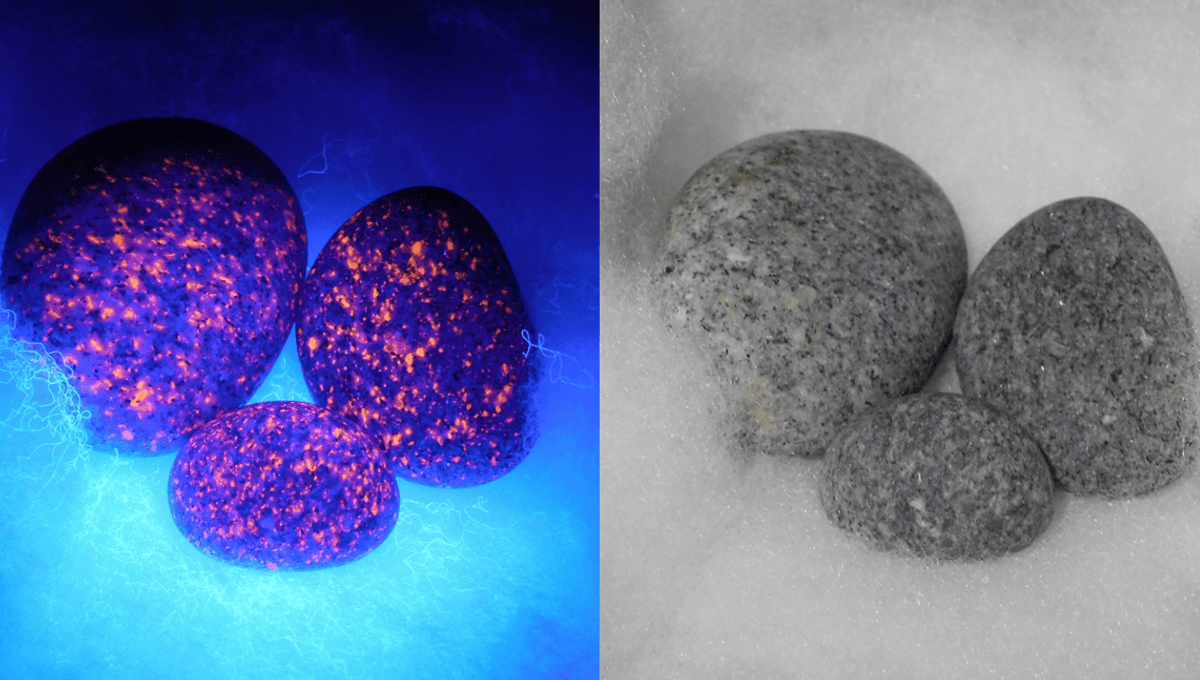
Scattered across the shores of the Great Lakes lie some pretty unassuming rocks – but hit them with a UV light, and they’ll start to glow like balls of lava.
Fluorescent Sodalite-bearing Syenite, more commonly known as Yooperlites or Glowdalites, were discovered along the shores of Lake Superior by a professed rockhound and Michigan Upper Peninsula local Erik Rintamaki. Tasked with naming his discovery, Rintamaki chose “Yooper” – a term referring to the citizens of the Upper Peninsula (UP) – and “lite” to refer to the rocks’ unique florescent quality.
What are Yooperlites?
These special rocks are predominantly found throughout North America’s Great Lakes, with many being found in the Upper Peninsula of Michigan. Due to the peninsula’s unique geology, they’re found in particular abundance on the shores of Keweenaw County.
Under normal light conditions, the rocks are completely indistinguishable – but under specific wavelengths of high-powered UV, they look like they’re glowing from the inside.
Tests conducted by Michigan Tech University identified the rocks’ composition to be made up of sodium, aluminum, silicon, chlorine, and oxygen, but with a distinct lack of structural sulfur. Kevin Cole, associate professor of geology at Grand Valley State University, told MLive that the rocks’ lack of sulfur is likely the cause of the fluorescent glow.
How did Yooperlites form?
Michigan’s glowing rocks are believed to have formed 1.1 billion years ago during the formation of the Midcontinental, or Keweenaw, Rift, which saw huge volcanic eruptions and lava flows.
The rift occurred mostly beneath what is now Lake Superior, and as magma hardened underneath the earth, it formed a type of rock similar to granite that is rich in the mineral sodalite, called syenite.
For the next billion years, these rocks remained buried underground – until the last Ice Age 100,000 years ago. The Ice Age brought giant ice sheets over 3,048 meters (10,000 feet) tall through the region, which scraped at the Earth’s surface and uncovered the hidden rocks. As the sheets traveled, they deposited the stones across the Upper Peninsula and throughout what are now the Great Lakes.
Where to see Yooperlites
The A.E. Seaman Mineral Museum at Michigan Tech University in Houghton has just opened a new Yooperlite display where you can see the stones up close and in their full UV glory.
Alternatively, you could grab a decent-quality UV light and head out to find them yourself. While you might have to look quite hard to find Yooperlites in nature, they are actually scattered everywhere throughout the region and even the rest of the world.
However, the best places to hunt for these magical stones are along rocky shores, where the lapping water is able to clean the Yooperlites’ surface, and places that are away from cliffs or hills.
But if you do plan to collect rocks from nature, always be aware of the local authority’s collection laws.
[H/T MLive]
Source Link: Rocks That Glow Under UV Light Can Be Found On The Great Lakes' Shores